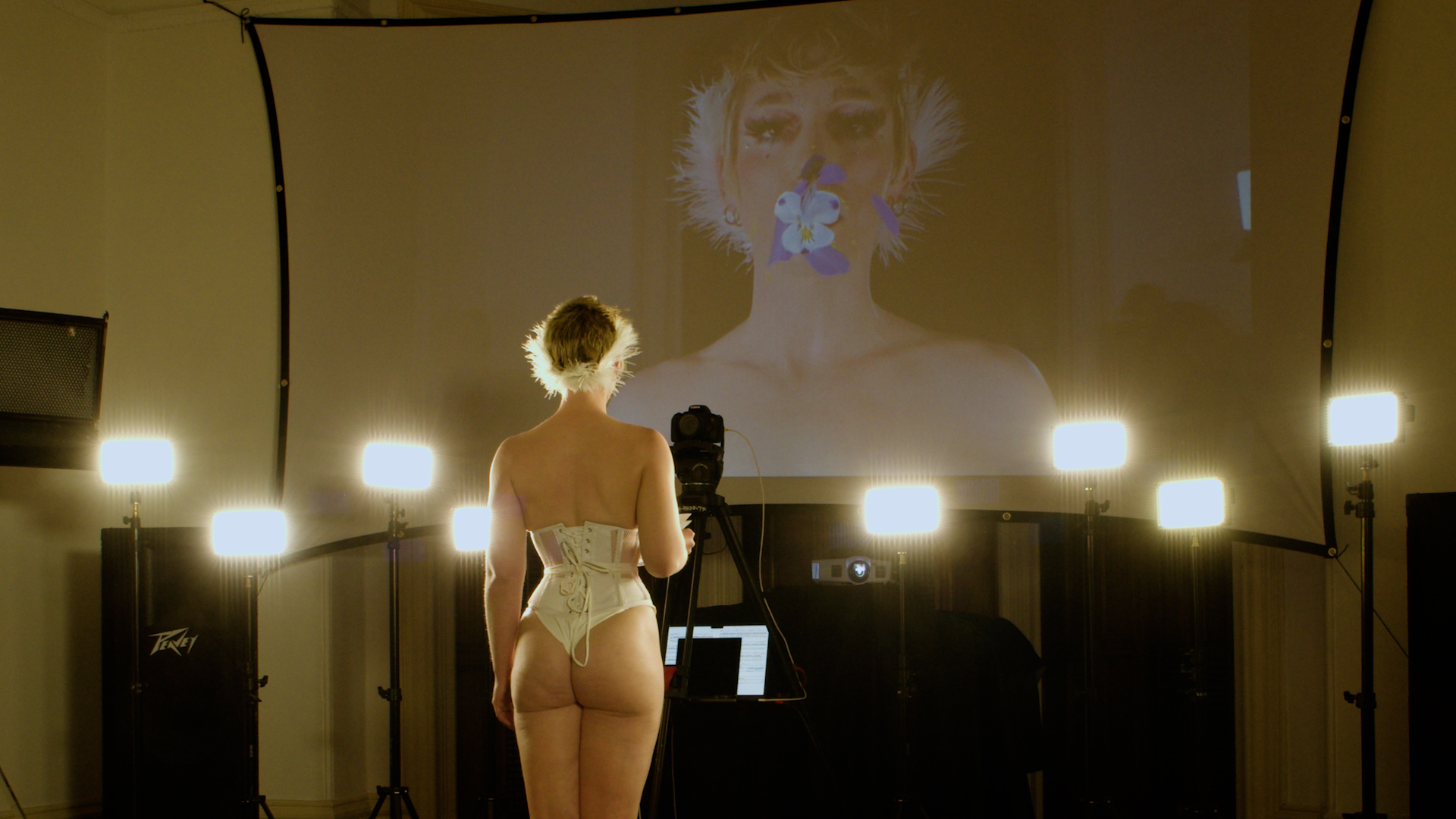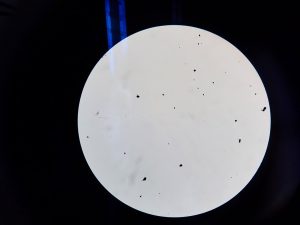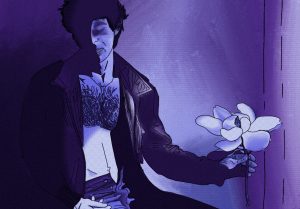Madonna was at a dinner party when her friend, comedian Sandra Bernhard, described a class she was taking on Jewish mysticism. She suggested Madonna consider joining. Madonna was hesitant, demonstrating uncharacteristic restraint; she wasn’t Jewish. Bernhard dismissed her concern and introduced her to the Kabbalah Centre in Los Angeles. It was 1996. Madonna was about to star as beloved former Argentine first lady Eva Perón in a film adaptation of Andrew Lloyd Weber’s musical “Evita.” With six weeks of filming left, she discovered she was pregnant with her first child. Daunted by the impending responsibility of motherhood, she sought her greater purpose which brought her to the Kabbalah Centre. Previously, she spent years practicing and studying yoga, Sanskrit, Buddhism, and Taoism. Still, she couldn’t figure out how to apply this knowledge to her life—until she became immersed in Kabbalah a few months before her daughter, Lourdes, was born.
Motherhood and Madonna’s newfound spiritual transformation became fodder for her 1998 album Ray of Light. She shed her early persona as a sexual provocateur for new identities: mother, spiritual devotee, and reflective divorcee.
Recent Grant Wood Art Fellow Jessica Tucker (aka Fetter) borrowed a lyric from Ray of Light’s namesake track for an evening of performances at Public Space One (PS1), Iowa City. The eponymous lyric, “Quicker than a ray of light, then gone,” is a palimpsest, a remnant of Curtis Maldoon’s “Sepheryn (Ray of Light)” visible in Madonna’s lyrical re-working and electronic dance reinterpretation of the 1971 folk song. The title functions as a quasi-thesis for the PS1 show. It alludes to unifying connections between the five performers—Camille Casemier (aka Webcam), Claire Fleming Staples (aka Fleming), Ále Campos (aka Celeste), Bun Stout, and Fetter.
Namely, “Quicker Than A Ray of Light, Then Gone” questions the fluidity of selfhood through the glow of projectors, digital ephemera, augmented reality, and green screen suits. The artists examine the invention and recreation of individual, collective, and national identities. I offer the following glimpses of the evening, unearthing some of the themes that link each work, like a mycologist mapping the spongy threads of subterranean mycelium that threaten to bloom and reproduce.
What Do I Owe Ya by Webcam
Webcam crouched on the floor before a projector screen, encircled by trails of wires, a stack of CDs and a player, a silver MacBook, a microphone, and unidentifiable ephemera. She fumbled with the CD player, starting and restarting the first verse of Miley Cyrus’ “Party in the U.S.A.,” an electric guitar riff accompanied by Cryrus singing “…Welcome to the land of fame excess (woah).” She paused the music. She explained that she arrived in Iowa City three days earlier to source unwanted objects from local resale shops as material. She described her performance “What Do I Owe Ya” as an essay-like interrogation of the “onslaught of American material excess.”
As an essayist, Webcam’s nod to the literary form piqued my interest. I scribbled in my notebook, “Object studies + = essay. How?” During my graduate program at DePaul University, I took an essay course where I was introduced to Brian Dillon’s “Essayism,” a fragmented ode to the form and practitioners of essay writing. Dillon offers (sometimes contradictory) definitions of the form and its qualities, including a passage describing the essay as an experiment in attention, sustained consideration of one thing, or framing the “act of attending to the world.” Using a live camera and a projector, Webcam directed the audience’s attention to a magnified view of her resale shop spoils while watching the screen herself, our shared gaze imbued the objects with significance. Our sustained attention prompted me to consider the political lives of the presented objects: Miley Cyrus’ “The Time of Our Lives,” a framed photo of a collection of stuffed bears, a green plastic farmer riding a green tractor; a canister of vintage “Lincoln Logs,” and a black and white photo of a woman resting beneath a heap of potatoes.
What do these objects reveal about a shared US identity? Webcam made no explicit claims. She introduced a children’s book about the Mayflower, the famed ship carrying English settlers to Cape Cod. She played a video of a woman reading “The Three Little Pigs” and layered the two books so that the green landscapes become fragments of stories about the pilgrims embedded within this classic fairy tale. The Three Little Pigs is a significant cultural reference for Webcam. The fairy tale was popularized in the United States after Walt Disney released a short film inspired by it. The film’s song “Who’s Afraid of the Big Bad Wolf?” became an anthem of the Great Depression; the first two pigs are not afraid of the wolf and lose their homes, an apt metaphor for the fate of the lower and middle class during this period of US history—combined with the story of the Mayflower, Webcam’s frame of attention proposed a layered portrait of a national US identity activated by these objects—a state founded by settler colonialism and economic inequality.
“The Master’s Feelings” by Fleming
Fleming framed cultural excess in “The Master’s Feelings” where they sat cross-legged with their MacBook beneath a crystal chandelier and played an audio recording of Diane Di Prima reading “Revolutionary Letter #49” and “Free all political prisoners / All prisoners are political prisoners.” The recording was a call to action. A couple hundred miles away, 68 students from the School of the Art Institute of Chicago (SAIC) were arrested and detained at the Chicago Police Department’s 19th District Station. The students set up an encampment in the Art Institute of Chicago’s North Garden to “stand in solidarity with the Palestinian people, demand SAIC and AIC divest from entities profiting off of the occupation and genocide in Palestine, starting with cutting ties with the Crown Family’s weapons manufacturing money.” On a projector suspended in front of an Italianate-style fireplace, Fleming shared a view of their desktop and played a shaky recording of the arrests taken across the street from the North Garden in SAIC’s MacLean Center. They moved a sticky note onto the desktop and began to type, “Today my colleague and how many students I do not know were arrested at the encampment they started at SAIC, the school I teach at.”
Fleming layered more video footage from the night law enforcement shut down the Occupy Oakland encampment 13 years earlier. Another sticky note: “I am a 37-year-old teacher who was very recently a grad student who was once a 17-year-old handcuffed to a chair about to be put on an FBI watchlist for protesting against animal testing, who was once a 24-year-old sleeping in a tent the first night of the Occupy Oakland encampment…” A political identity emerged. Like a scholar dutifully providing in-text citations, Fleming played another video, Diamanda Galás singing “Let My People Go” in her famed soprano sfogato. Their demand is clear: Free them all.
Fleming’s digital assemblage reminded me of Édouard Glissant’s Poetics of Relation when he wrote, “The poet’s word leads from periphery to periphery, and, yes, it reproduces the track of circular nomadism; that is, it makes every periphery into a center; furthermore, it abolishes the very notion of center and periphery.” Fleming explored how interconnected images and cultural objects abolish any sense of periphery or center. Individual and collective political identity is shaped continuously by a slow, gravitational pull of time, events, and relics.
The scope of Fleming’s frame expanded. Rage Against the Machine’s “Killing in the Name” played. When we arrived in Iowa City, Fleming explained that they listened to Rage Against the Machine with Fetter’s partner Nimrod, the pair giddily connecting over their shared interest in the musical group. They discussed the impending SAIC protest and the ongoing genocide in Gaza, debating how long it would take for the Chicago Police to dismantle the encampment. Less than 24 hours, Claire insisted. An AI-generated image of the musician Grimes as Judith Slaying Holofernes appeared onscreen. Fleming introduced another digital sticky note: “Judith slayed Holofernes just south of Rafah, where Israel is currently bombing.” A poorly edited clip of Elon Musk, Donald Trump, and Northrop Grumman’s logo being swallowed by flames played. The person who protests animal testing is the same person who shouts, “mic check,” at the Occupy Oakland protest, who protests the Palestinian genocide, and who wants these oligarchs and military contractors incinerated is the same. Fleming’s rage accumulates. Oppression in all its forms necessitates the collective.
“Onto A Skin, Highly Reflective” by Celeste
With Stout’s assistance, Celeste reprised “Onto a skin, highly reflective,” which debuted a week prior at DFBRL8R in Chicago. The room was dark. A live stream was projected on the screen in the front room. The performance began on the third floor of Close House outside the artist studios. A handheld flashlight illuminated a shuttered window at the top of the staircase. A green-gloved hand stretched its fingers wide. The camera slowly descended the stairs. Two figures wearing green screen body suits, matching black bob wigs, black corsets, and elbow-length black gloves adorned with black press-on nails converged in the front room. The figure who descended the stairs had a go-pro camera affixed to their chest. A cello score wailed in the background, originally performed live by Will Mitchell at DFBRL8R. The figures danced around each other. One smacked the other across the face, and the other figure struck back. They pressed their chests together, arms outstretched. The choreography reminded me of sparring antelope —a pre-verbal erotic encounter defined by a sense of conquest, or defeat. Someone must lose.
“Onto a skin, highly reflective” contains a quality the artist Xandra Ibarra calls “stuckness.” Ibarra uses this term to describe their main preoccupation as an artist, thinking about how “as racialized people, our bodies are occupying this stuck status in the visual economy.” Over 10 years, Ibarra performed hundreds of “Spictacles” under the alias of La Chica Boom. Each parodied sexualized Mexican iconographic tropes like La Virgin de Guadalupe, the luchador, Tapatío Hot Sauce, etc. Ibarra’s “Spictacles” allowed her to embody her own racial and sexual abjection and “manipulate the politics of racialized sexuality to see if [she] could find queer forms of pleasure.” In 2012, Ibarra retired from La Chica Boom with her show F*ck My Life (FML). She wanted to “abandon everything: [She] wanted to abandon [La Chica Boom], and being Mexican, [being a woman]. [She] wanted to abandon being a human.” Celeste’s work similarly sheds their Celeste persona so that they might evade racial or sexual abjection.
A voiceover of Celeste asked, “How can I become all the more real and yet disguise myself, to protect her, to protect them.” Who are they hoping to protect? The indefinite pronouns refer to unknown subjects, possibly Celeste and their persona. Celeste’s performances often incorporate autobiographical elements. For “Una Vez Reina, Siempre Una Reina,” Celeste honors their mother, who was a former pageant queen in El Salvador in the ‘80s by wearing a commissioned blue satin dress nearly identical to their mother’s. And they reference volcanoes in El Salvador, dance cumbia, and reflect on a question their mother asked them for “Con Esos Ojos.” They recognize the audience is necessary. Their gaze makes Celeste real, but it is also laced with a violent desire for categorization. Hence, needing a disguise: the green screen suit.
The visual strangeness of the suits remained on my mind all evening. The green spandex flattened their faces into featureless ovals. Afterward, the artists and I returned to the Grant Wood Art Colony and ordered from Gumby Pizza. A spinach pizza arrived in a box decorated with a large illustration of Gumby, the green claymation character Art Clokey designed that became popular during the ‘50s in an eponymous cartoon. Seeing this cartoon from my childhood was banal, yet serendipitous. Gumby’s grinning, green face was an obvious foil for Celeste’s suit. Clokey believed Gumby’s color was neutral according to (racist) color terminologies for race. The green screen suits anonymized Celeste and Stout. Both were unburdened from racial or gender markers. Celeste and Stout became the inverse of Ibarra’s hyper-racialized caricatures; they became non-identities, reflective surfaces that the audience might catch glimpses of themselves. They became, as Celeste suggests, muses.
In the final moment, Celeste was unmasked. The disguise shed. They reclaimed their body. The self receded and emerged in the reflection of “the other.”
“The Swan” by Bun Stout
Six months before arriving in Iowa City, Stout staged “Siren,” a collaboration with Celeste and musician Spacey Lacey at Roots & Culture. Frequent collaborators, Stout and Celeste wore matching silicone headpieces and mermaid tails that connected the two. Celeste tattooed a cloverleaf symbol on Stout’s sternum. The cloverleaf symbolized “better times ahead” and was borrowed from Spacey Lacey’s paintings. Stout trained their phone camera on their chest as Celeste tattooed them. The augmented reality app searched for the completed symbol and triggered an animation once it recognized the cloverleaf symbol. Projected onto a large screen behind the duo, the animation began with an image of Stout’s chest splitting open to reveal a poem they wrote. “Siren” symbolized a self-examination and marked a moment of internal transformation.
Stout’s “The Swan” continued to question the instability and inconstancy of selfhood through moments of transformation. They entered the room wearing white coveralls and whistling a tune. A video of a ballerina dancing was projected onto the screen. Stout paused the audio that was supposed to be playing. They reset and asked for the audience’s patience while Fetter and Fleming attempted to correct the issue. It turned out to be a corrupted file. The audio returned later in the video. This technological blip, or disruption, mirrored others in the show: Fetter accidentally restarting Celeste’s audio, the GoPro worn by Stout losing connection midway through or Flemings’ computer not recording both projections and preventing them from preserving theirs. The work defies documentation. These disruptions symbolize this idea of the self and its elusive nature.
Stout reset and began the performance again. They moved back and forth across the room while whistling and placed a series of lights underneath the projector screen. The ballerina continued to dance. French composer Camille Saint-Saëns’ “The Swan” played in the background. “The Swan” was one of 14 musical movements Saint-Saëns wrote for The Carnival of Animals (which he composed after a disastrous concert tour in Germany.) “The Swan” was the single movement he allowed to be performed publicly until after his death because he worried they were too frivolous and would damage his reputation as a serious composer; after his death, The Carnival of Animals became one of his most popular compositions.
Stout, playing upon the humorous origins of the musical movement, shed their coveralls, revealing a pair of white underwear and a corset around their waist. They began to perform traditional ballet positions, 5th position, and arabesque. Except they transition the positions fluidly into movements reminiscent of bodybuilding poses, like side chest or rear lat spread poses. That is the epitome of drag, exaltation and satire of gendered activities. The blend of movement styles pointed to Stout’s transformation; they started dancing around the age of four and stopped sometime in high school. One night as we were leaving a bar in Rogers Park, they shared that they were training again. They found joy in returning to this childhood practice after undergoing top surgery a year prior. “The Swan” is a circuitous reprocessing of the past.
During the final segment, Bun activated an augmented reality poem similar to the one in “Siren.” An orchid sprouted from their mouth in the projection. The clover reappears as a symbol, this time in the book of an ex-husband before it slips to his new floor. One line struck me, “Narcissus but for the other.” It implied a damaging infatuation, perhaps with a lover. The author’s unwavering fascination impedes their growth; they don’t notice they’re wasting their life and beauty. The final lines of Stout’s poem: “What blindness you experience during your own illumination / Everyone sees you naked while / some suns stare right into your eyes.”
“Possession” by Fetter
My face was momentarily erased. I was reclining on the carpeted floor beside the defunct Italianate fireplace when Fleming handed Fetter’s iPhone to me. I propped myself up on my left elbow and nervously angled the phone’s front-facing camera until it recognized my facial features and applied Fetter’s augmented reality facial filter. I became a momentary avatar for Fetter, wearing a disfigured mask of her face. My nose became wider, snout-like; my eyes became bulbous and elongated. I was pixelated and lifeless, like each of the audience members before me. For a moment, I wondered if I should stand up and pass the phone to Fetter, who continued to play an electronic music set behind a makeshift DJ booth at the front of the room.
She was staging a version of “Possession,” an iterative performance I saw a version of a year earlier at Elastic Arts in Chicago. Before passing her iPhone to the audience, Fetter placed it on a face-tracking tripod mount beside the DJ booth that allowed it to follow her movements and project her face wearing the AR filter onto the screen behind her. Fetter sang into the microphone and paused to sample her voice, using a synthesizer to distort the sound into a reverberating musical landscape—an echoing room without any furniture to dull the sound. Whenever her iPhone lost sight of her face, she paced back and forth until her image appeared onscreen again. She duplicated the live feed and arranged the windows to create a similar effect to standing in front of a mirror with another mirror angled so that you can see yourself multiplied endlessly until you become a microscopic representation of yourself. During the penultimate moment of the performance, Fetter removed her iPhone from the tripod and passed it to the nearest audience member. Without instruction, they held the camera until it projected an image of them wearing Fetter’s face for a moment and then they passed it to the next person. I was the last to possess her face.
The AR filter appeared ghoulish. It altered Fetter’s face to make them more severe, animalistic, and unrealistic like Michelangelo’s Studies of Grotesques. During a discussion on the lawn of PS1 Close House the following afternoon, Fetter described using her likeness as “cannibalizing her data.” She repurposes the tools designed by tech giants to steal her data and plays with them in unconventional ways. The same feature Fetter used to create the AR filter worn for “Possession” allowed Instagram users to change their appearance until it came under legal fire in 2023; Instagram parent company Meta paid a $68.5 million dollar settlement in a class action lawsuit that alleged Instagram’s facial recognition technology violated Illinois’ Biometric Information Privacy Act. By wearing the facial filter, I am linked to every audience member by a tool whose marketable purpose is transforming us into better consumers, alienating us from one another—making us more monstrous.
Except Fetter’s misuse of this technology dissolves the boundaries between subject and object, spectator and spectacle, you and I, with surprising intimacy. We become fugitives hiding underneath Fetter’s likeness; she offers an invitation—repurpose and misuse your image. Resist self-commodification. Become someone, or something new.

About the author: riley yaxley is most frequently a dinner party host, a fishkeeper, a homebody, a beach rat, a wallflower, a professional-email-sender, a progeny of “Midwestern Nice,” an amateur dancer, a flâneuse (if such a thing is possible), a glutton, an errant daughter who forgets to call her mom, a shameless navel gazer; and sometimes, she is also an essayist, memoirist, and art writer.






